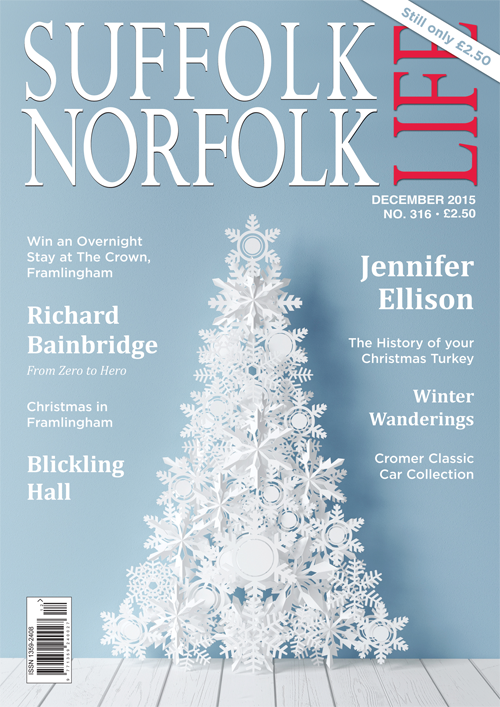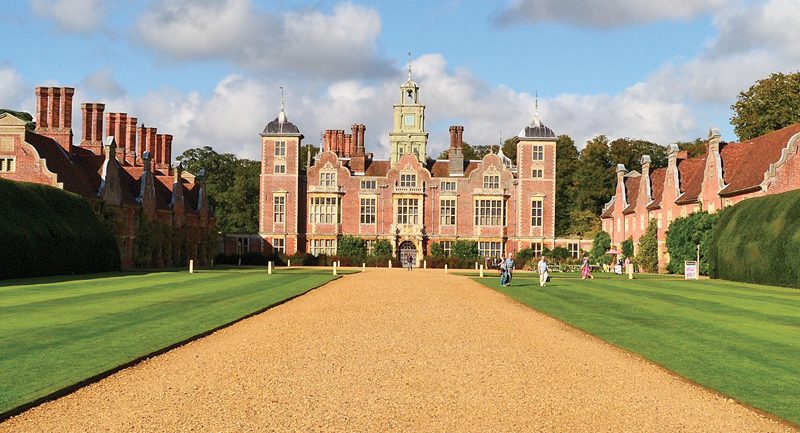- A feature from the December 2015 issue of Suffolk Norfolk Life magazine
 Click to view this issue »
Click to view this issue » - Category
- Places
Step into the grounds of Blickling Hall in Norfolk, and it’s hard not to be captivated by the enchanting landscape, magnificent architecture, lakeside walks and unusual follies. The remarkable stately home at its centre was built between 1616 and 1624 by Robert Lyminge, the architect of Queen Elizabeth I’s childhood home, Hatfield House.
Blickling Hall was built on the ruins of an earlier mansion – Anne Boleyn’s family home, which is also thought to have been her birthplace. Anne’s great-grandfather Geoffrey Boleyn purchased the estate from his neighbour and mentor, Sir John Falstaff, in the mid 1400s, and it passed down the family line to Sir Thomas Boleyn, Anne’s father. Thomas was a member of King Henry VIII’s court, and he used the king’s interest in his daughters to further his career. The king made Thomas the first Treasurer of the Household, and honoured him with the titles, Knight of the Garter and Viscount Rochford.
In 1929, Sir Thomas was awarded the Earldom of Wiltshire, and four years later, his daughter Anne became queen. The royal marriage was short-lived, however, because in 1536 she was beheaded on charges of adultery, and Thomas lost favour with the king. Sir Thomas died in 1539, and the Blickling Estate passed to the Clere family.
Sir Edward Clere frittered away the family’s wealth, leaving Blickling Hall in ruins when he died, bankrupt, in 1605. So in 1616, when Sir Henry Hobart acquired Blickling Estate, he embarked on constructing the ambitious new house that still stands today.

